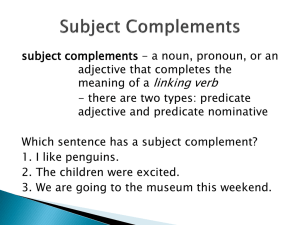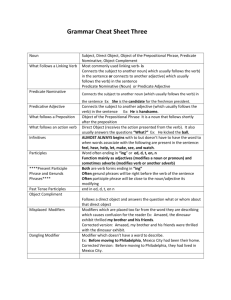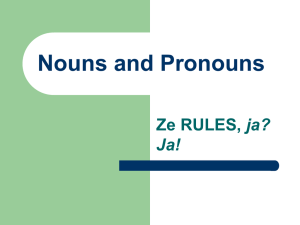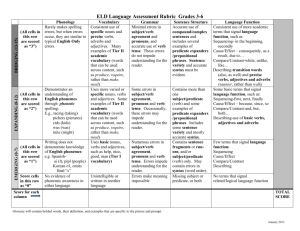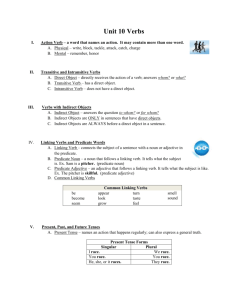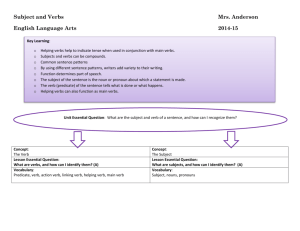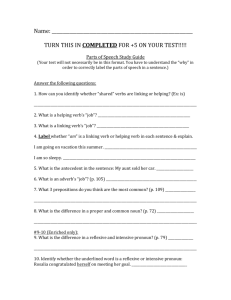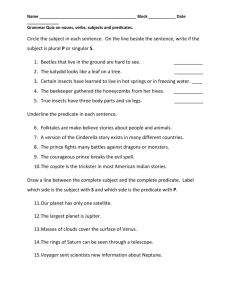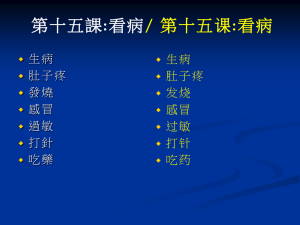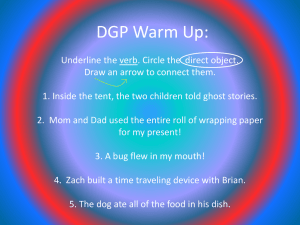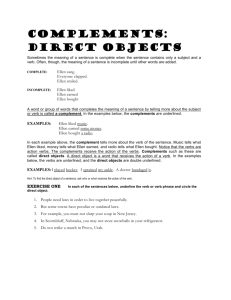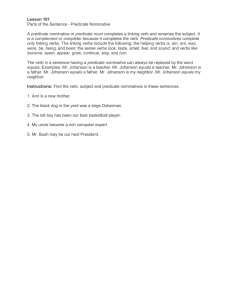NOUNS * What is that noun doing
advertisement
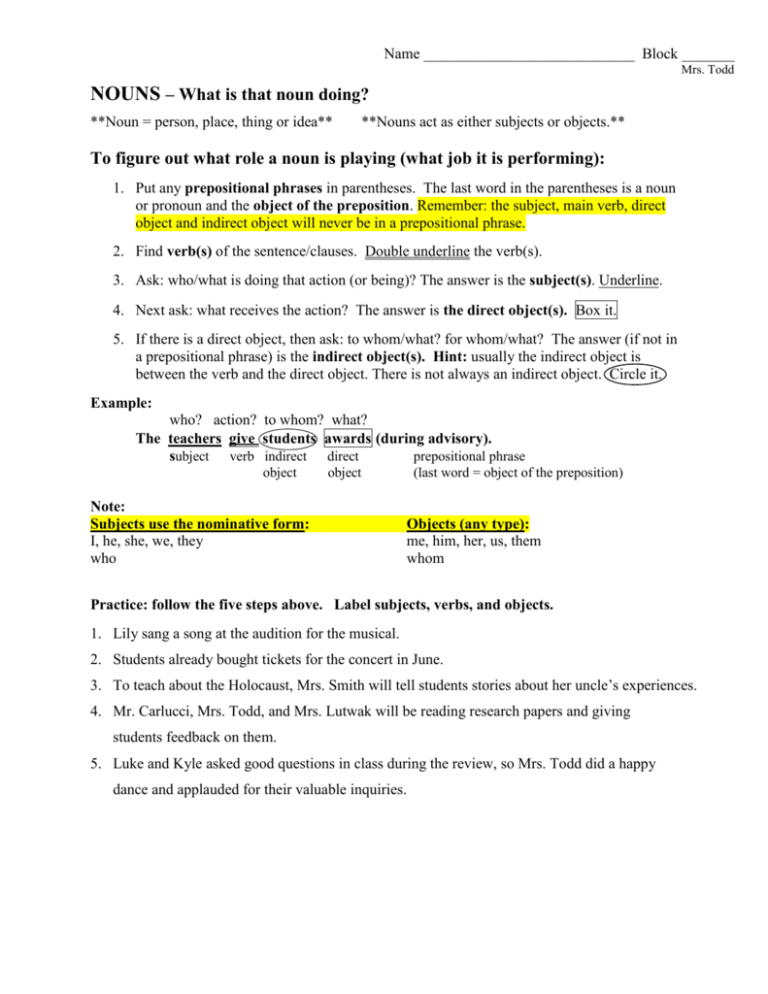
Name ____________________________ Block _______ Mrs. Todd NOUNS – What is that noun doing? **Noun = person, place, thing or idea** **Nouns act as either subjects or objects.** To figure out what role a noun is playing (what job it is performing): 1. Put any prepositional phrases in parentheses. The last word in the parentheses is a noun or pronoun and the object of the preposition. Remember: the subject, main verb, direct object and indirect object will never be in a prepositional phrase. 2. Find verb(s) of the sentence/clauses. Double underline the verb(s). 3. Ask: who/what is doing that action (or being)? The answer is the subject(s). Underline. 4. Next ask: what receives the action? The answer is the direct object(s). Box it. 5. If there is a direct object, then ask: to whom/what? for whom/what? The answer (if not in a prepositional phrase) is the indirect object(s). Hint: usually the indirect object is between the verb and the direct object. There is not always an indirect object. Circle it. Example: who? action? to whom? what? The teachers give students awards (during advisory). subject verb indirect direct prepositional phrase object object Note: Subjects use the nominative form: I, he, she, we, they who (last word = object of the preposition) Objects (any type): me, him, her, us, them whom Practice: follow the five steps above. Label subjects, verbs, and objects. 1. Lily sang a song at the audition for the musical. 2. Students already bought tickets for the concert in June. 3. To teach about the Holocaust, Mrs. Smith will tell students stories about her uncle’s experiences. 4. Mr. Carlucci, Mrs. Todd, and Mrs. Lutwak will be reading research papers and giving students feedback on them. 5. Luke and Kyle asked good questions in class during the review, so Mrs. Todd did a happy dance and applauded for their valuable inquiries. Information for your (optional) Edification Predicate Nominative = a noun or pronoun that follows a linking verb* and renames, identifies or gives more information on the subject of the sentence. *Linking verbs do not express action. Instead, they connect the subject of the verb to additional information about the subject. Linking verbs include all to be verbs (is, am, was, were, etc.) as well as words like seem, feel, appear, etc. It is a linking verb if you can replace it with = Examples of predicate nominatives: Mr. Fox is our principal. (Mr. Fox = our principal.) “principal” is the predicate nominative My favorite season is summer. (favorite season = summer) “summer” is the predicate nominative Note: predicate nominatives use the same form as subjects. (If you take Latin, you will recognize “nominative.”) In English this only affects pronouns. I, we, they, who = nominative and are used as subjects or predicate nominatives (me, us, them, whom are used as objects) For example: Phone rings. “Is Mrs. Todd there?” Mrs. Todd properly replies, “This is she.” Note 2: Adjectives after linking verbs are called predicate adjectives. For ex: Grammar is fun. Gerund = a verb form ending in –ing that acts like a noun (Gerund is one type of verbal. Verbals are verb forms that function as other parts of speech.) Reading is fun. Sleeping is mighty fine too. Her favorite activity is reading. [used as subjects] [used as a predicate nominative] People who have not met the right book yet say they do not like reading. [direct object] You may have time for reading after PARCC. [object of the preposition: (for reading)] When identifying the part of speech, gerunds are nouns because they act like nouns. Note: Identify part of speech based on the job the word is doing in the sentence.
